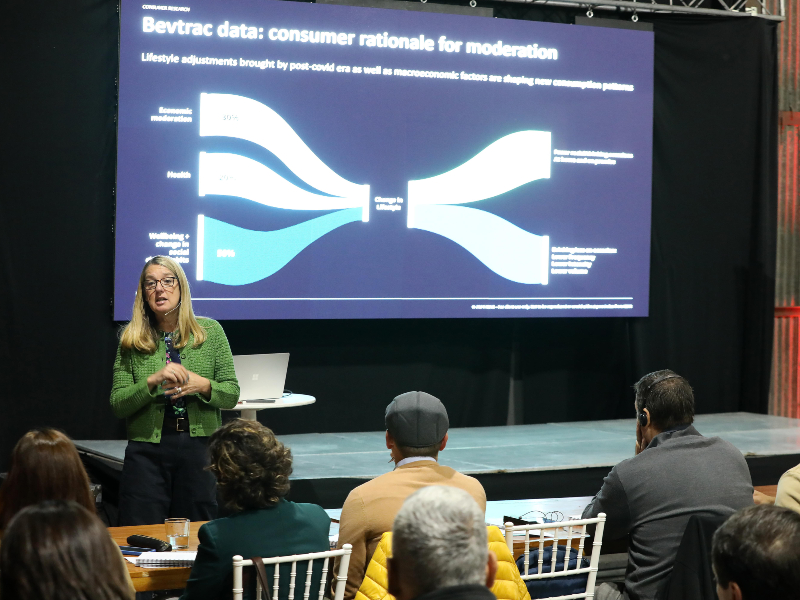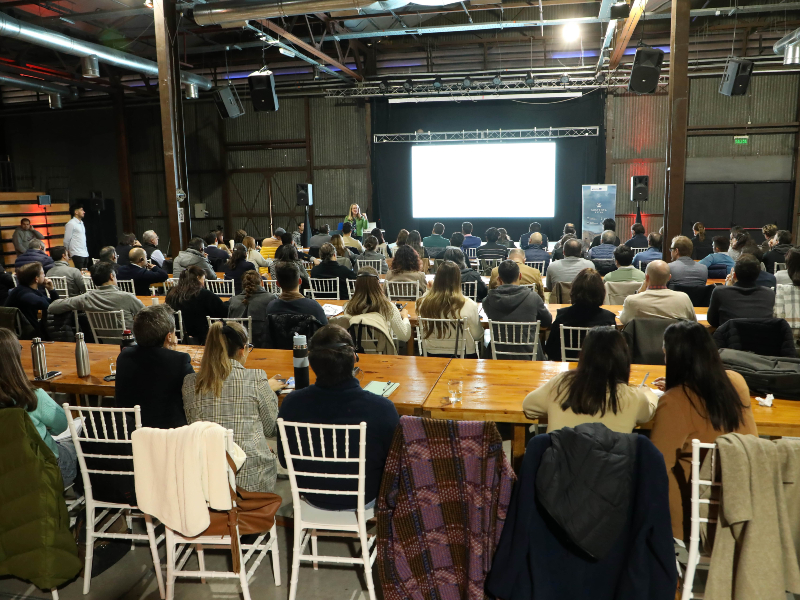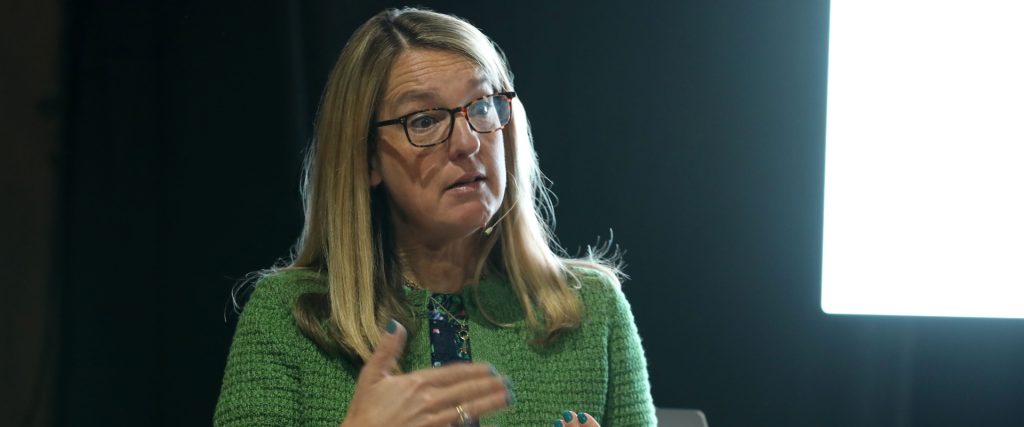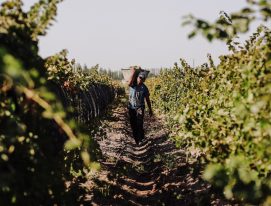“Wine in 2030” was the theme that brought Lulie Halstead, a global expert in wine trends, to Argentina for workshops on Wednesday 12 and Friday 14 in Mendoza and Buenos Aires respectively. The workshop, organized by Wines of Argentina, Vinventions and UPM Raflatac and sponsored by FedEx, the City of Mendoza’s Nave Cultural and OWN Hotels (SLS Puerto Madero), through the Tourist Hotel Association of Argentina (AHT), offered an opportunity to rethink strategies for success in a competitive industry.
Beforehand, Lulie Halstead spoke to Wines of Argentina about global trends over the next decade, how wine can be introduced to new generations, and non-alcoholic drinks, among other topics.
Interview with Lulie Halstead

What are the biggest trends coming in the next five years?
The primary trend that we will see continuing over the next five years is ongoing moderation of alcohol consumption. This comes from a number of different directions, overall and on average. Consumers are drinking alcohol less frequently; meaning on fewer occasions, and when they do drink alcohol, they´re drinking less of it. This is leading to an overall premium-ization in the choice of alcohol as a beverage. We’re seeing that in spirits, in beer, and also in wine. It´s very much the ongoing trend of less but better.
The second trend we’re seeing if focused on refreshment. This is typically related to beverages that are served cold and often carbonated. When it comes to wine, the only growth area in wine globally, for example, is in premium rosés, which fits with both the less but better and refreshment trends. We expect to see proportionally higher consumption of both white and sparkling wines and, in the case of red wines, a tendency to choose those with naturally lower alcohol levels or, to a certain extent, where the alcohol has been reduced.
That means that red wines chosen in the future by many consumers will be those that sit between 12% and 13% ABV, for example, rather than 14% or 15%.
The third trend is that global wine drinkers are, on average, ageing. As populations age, particularly in mature and established markets, that is reflected in wine-drinking demographics. So it will be increasingly important to target, reach and position marketing for consumers in their 50s, 60s, and 70s and to be aware of their needs.
The fourth major trend that we’re seeing is related to blending. By that I mean blending across categories; blending between mixers, soft drinks, Ready To Drink (RTD), spirit-based drinks, and wine drunk as a mixture as opposed to simply on its own.
What are the biggest competitors the wine industry has today?
Some of the key competitors are low and zero alcohol beer, RTDs and, increasingly, more premium and spirit based RTDs.
Wine will also face strong competition from mixed drinks, high balls, cocktails and, to a lesser extent but still importantly in some markets, the resurgence of local spirits, particularly in conjunction with mixed drinks, cocktails and RTDs. So, for example, in South Korea soju is becoming an increasingly popular base for mixed cocktails but also in RTDs.
What should the wine industry do to reach Gen Z and upcoming generations?
Number one, focus on the social positioning of wine and make it seen as something that is not exclusively consumed with food. We know from the social habits of younger consumers and Gen Z that their primary alcohol consumption is done at social occasions which may or may not include food and if they do include food they won’t usually be formal occasions.
Wine is currently often perceived by Gen Z as being a choice to accompany food. Secondly, make wine more accessible, we often hear from Gen Z consumers that wine continues to intimidate them, i.e.: you need to be an expert or knowledgeable to navigate the wine category. Breaking down those barriers is increasingly important as a way of engaging with Gen Z. Thirdly, make wine brands into clear, distinctive assets, brands that can be recognized by their trademark, by their logo, very distinctly, so that Gen Z consumers can find, locate and buy wines easily at the point of purchase.
And then finally for Gen Z, focus the portfolios of white, rosé and sparkling wine on these consumers, and from the perspective of reds, primarily on premium wines and what those wines can deliver for consumers; what makes them distinctive, differentiated and special.

How important will non-alcoholic wines be in the coming years?
Right now, the low- and no- alcohol sectors are very much dominated by beer and that will continue, especially by zero-alcohol beer.
We know that overall consumers are moderating their behavior, a significant behavior shift has happened, but we also know that typically a maximum in each market of 35% of alcohol drinkers consume low or no- alcohol options.
That means that the market for low and no-alcohol alternatives other than zero alcohol beer is relatively small. We also know from IWSR research that abstainers typically do not drink low or no-alcohol alternatives.
Additionally we see that increasingly retailers are demanding low- or no-alcohol options as part of their KPI and corporate social responsibility as retailers. So there will be significant demand for low and no alcohol alternatives from retailers and trade customers.
How important will more sustainable packaging be? What other changes could we see in the wine industry as a result of climate change?
Today, alternative packaging, sustainable packaging, is mainly a demand or requirement of trade customers rather than consumers.
Most consumers believe now and have done for many years that actually glass is a sustainable form of packaging given that in most countries and most locations it is recyclable. So there is a great deal of educational communication work that is required for consumers, the majority of consumers, to start to demand lighter glass bottles or alternative packaging types.



